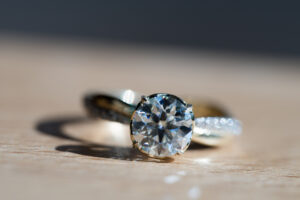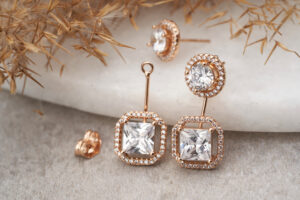
Diamonds, whether it is a mined diamond or lab-grown diamond, are prized for their hardness, or their ability to withstand scratches and abrasions. Diamonds, on the other hand, aren’t indestructible. Even if your diamond is set in the most secure setting, it can be chipped. To prevent your lab-grown diamonds from chipping, you must take all necessary precautions.
Here are some of the tips that will help to avoid the chipping of your lab-grown diamond rings.
Check The Prongs Regularly
The prongs supporting the diamond in the setting are often bent or cracked, which is one of the most prevalent causes of diamond chipping. Your gemstone is no longer held tightly in its setting even if only one prong is broken. If you accidentally bang your ring, the section of the diamond where the prong is out of position is not guarded, and the diamonds can be chipped easily.
Do Not Buy Lab-Grown Diamonds That Have Too Many Inclusions
Diamonds with a lot of inclusions aren’t everyone’s favorite because they’re not only ugly, but they’re also more susceptible to chipping and breaking. The weaker a diamond’s internal structure is, the more internal faults it possesses and the larger they are. Generally speaking, it is better to avoid diamonds with a GIA clarity rating of I2 or I3 on the scale. Inclusions in the diamonds can jeopardize their integrity on occasions.
Tension Settings Should Be Handled With Care
Some settings are more dangerous than others for the diamonds that are mounted in them. The tension setting, for example, holds the diamond in position by pressing the ring’s two ends against the sides of the diamonds. The tension setting puts pressure on the center stone, and if you bang your ring, the diamond may chip and get damaged. If you choose tension setting, keep taking mind that stones mounted in such rings may chip.
Thin-Edged Diamonds Should be Secured

Round diamonds with narrow girdles are particularly sensitive to chipping because their margins are so thin. If engagement rings contain such a diamond, make sure it’s placed in a setting that preserves the girdle. Similarly, some diamonds are more susceptible to chipping due to the shape in which they are cut.
Handle The Chipped Diamonds With Caution
If you strike a diamond where it’s already fragile, it’ll be more readily chipped or cracked a second time. Check your diamond with a loupe or your hands to see if any chips are there. Handle your stone carefully if it has been damaged.
